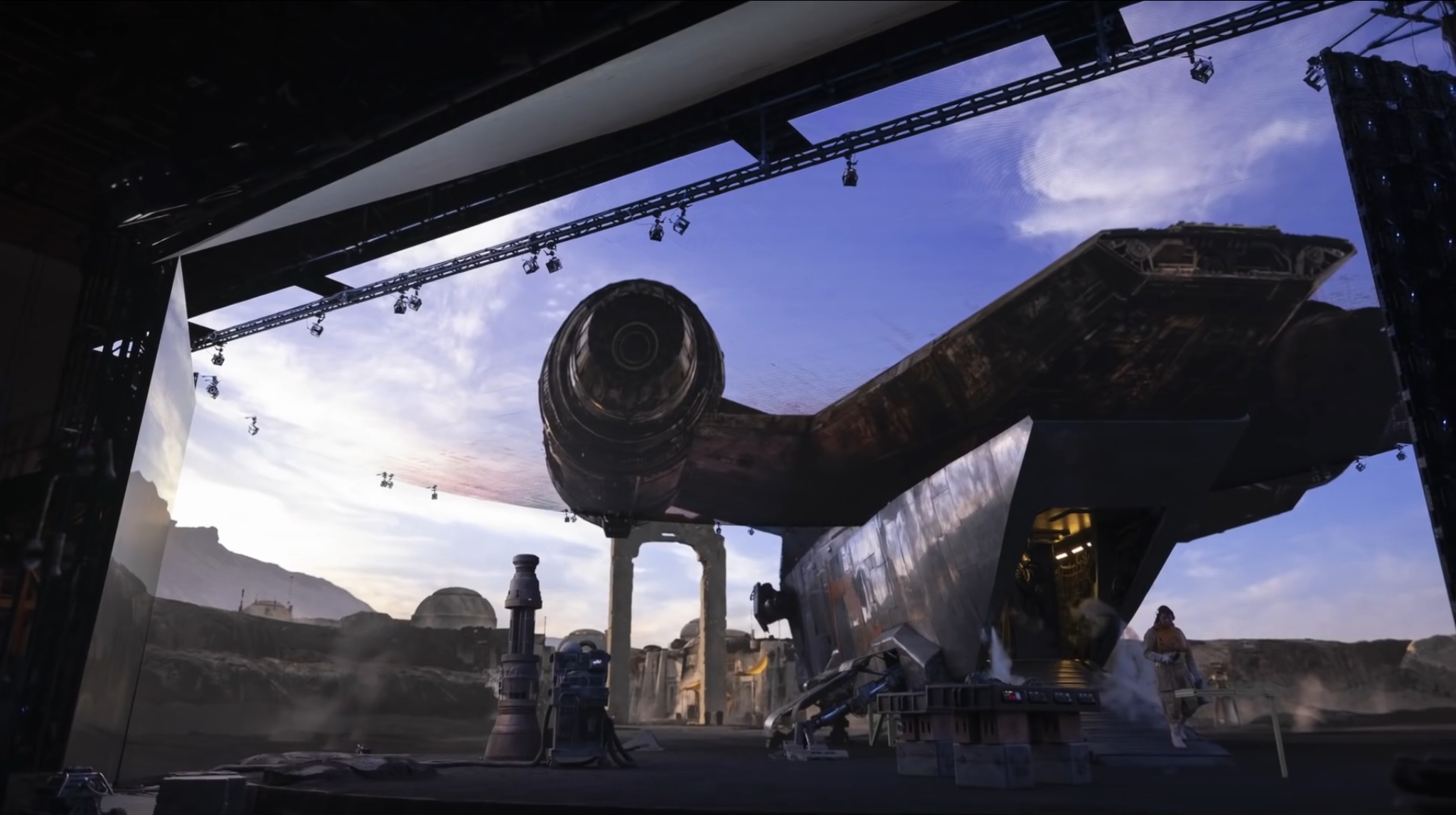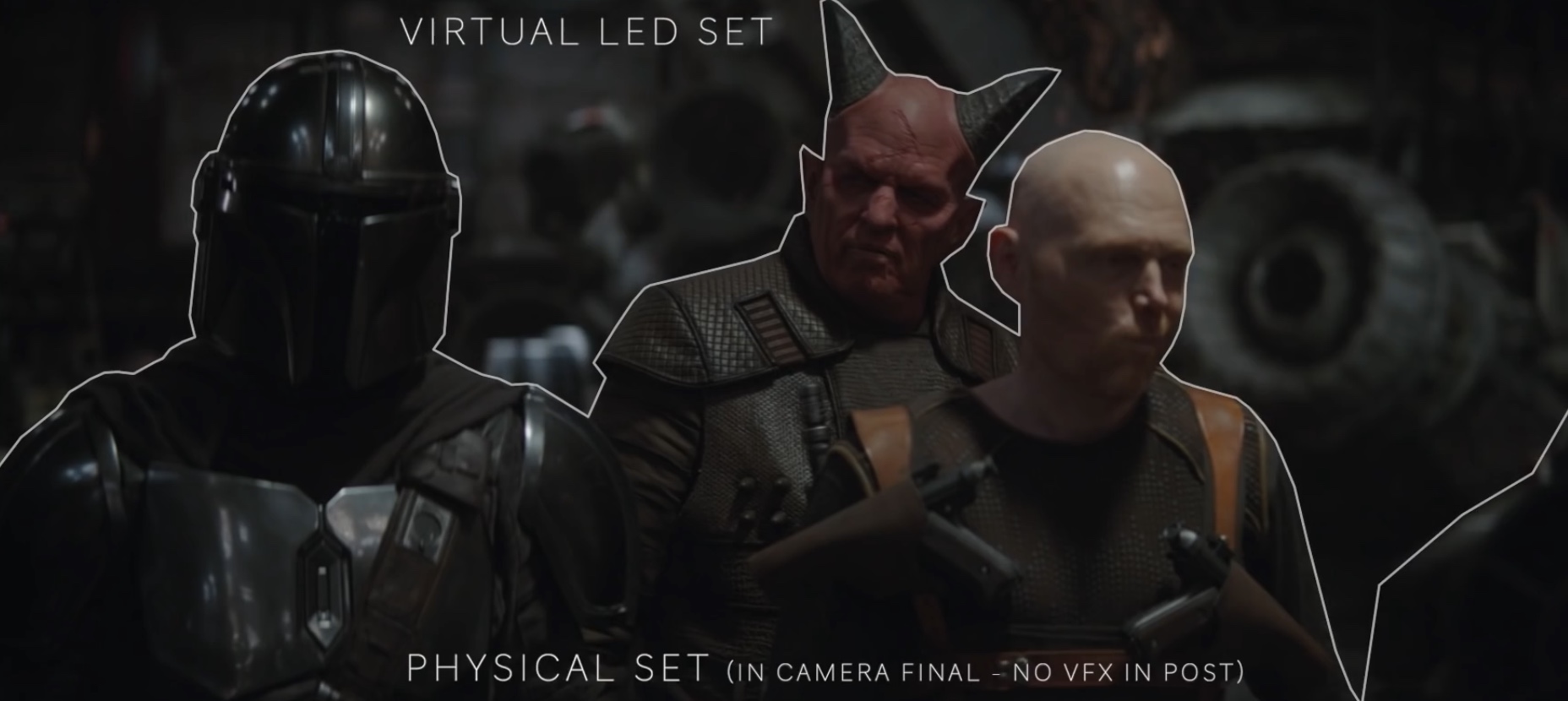The Mandalorian uses this amazing trick that could change TV and movies forever
The Mandalorian's set technology is like Star Trek’s Holodeck come to life

The Mandalorian was one of the hottest series of 2019 for many reasons, but one of them was actually invisible to the audience — and it’s just amazing.
You may have heard that Jon Favreau — the creator and showrunner of The Mandalorian — wanted his series to have a physical feeling, with actual costumes, sets, puppets and practical effects. But virtually every set you thought it was 100% real was actually a lie. A lie that didn’t require green screening or post-production. A lie that actors, directors, photographers, and special effects supervisors could see with their own eyes, but a lie nonetheless.
- Everything we know about The Mandalorian season 2
- Plus: All the Baby Yoda toys coming this year
- Just in: Disney Plus UK pre-orders arrive with limited time 30% off sale
Watch this video explaining how Lucasfilm made and filmed all the environments of The Mandalorian and join me after you get your jaw back from the floor:
How does it work?
Lucasfilm and Epic Games used Unreal Engine to create the sets of The Mandalorian. Deserts, frozen tundras, space station hangars, underground city tunnels... most of the things you can see on screen were done in real time with the same game engine that many triple-A games use.
The sets — still or animated — were projected on a giant studio set with LEDs. In that set, actual pieces of objects — like parts of Mando’s spaceship, some chairs or a rock — would be created physically. But the rest would be all virtual, creating a 21st century holodeck for filming.
Then, the crew would actually use the camera to film the actors in the scene directly. No green screen. No post production. Everything is captured by the camera straight: real actors, real objects, and virtual environments alike.
Of course, the camera — like a pair of VR or AR goggles — is in sync with the projected environment. So, as it moves or as the camera operator changes lenses, the environment changes the perspective to keep the illusion.
Sign up to get the BEST of Tom's Guide direct to your inbox.
Get instant access to breaking news, the hottest reviews, great deals and helpful tips.
And since the environments are virtual and in real time, they could move at any speed and in any direction too, easily creating the effect of movement for the actors. A high speed chase — something that would usually require either filming in a real environment with rigged vehicles or against a green screen — would be completely “virtual” but visible in the real world.

A new era of filmmaking
The level of realism you get from this is not only amazing thanks to the 3D environments, lighting, and reflections on real surfaces — which is something you can fake at great cost in post-production — but because actors can actually be in any place and see what they are interacting with.
That is the biggest breakthrough of this filming method: actors work in a virtual set that they can see, looking at real things that happen around them and not just in the void of a green screen set.
The latter always made films look unreal not only because they weren’t captured by the camera and were later added during post-production but because actors were not in any real place and had to look at things that they couldn’t see. You only have to see the Star Wars prequels to see the effect. Everything looks fake.
But The Mandalorian completely eliminates this problem with this new “holodeck” technique. By projecting real time environments that could move in sync with the camera moves and the actors, you are effectively creating a virtual world within the physical world. A world that your actors can play with and cameras can film.
Every reflective surface will pick up these environments. Every surface will be illuminated by these projections and LED panels as if they were in the real place, from a frozen alien planet to a remote desert — all without having to travel. That adds the cost benefit of not having to travel to a location to film. You just bring the location to your set.
And, as the video says, you can even freeze time. Typically, filmmakers have a limited time to film a scene during a sunset because the sunset only lasts so long. With this method, you can have a 10 hour sunset that is live at any point you want. And you can have the exact weather you want.
It's al really amazing. When Favreau says that he believes that the new technology used in The Mandalorian is going to have a lot of impact in the way everyone makes films and TV series, he’s not exaggerating one bit. Without a doubt, The Mandalorian is going to change TV and film in more ways than the obvious.
Jesus Diaz founded the new Sploid for Gawker Media after seven years working at Gizmodo, where he helmed the lost-in-a-bar iPhone 4 story and wrote old angry man rants, among other things. He's a creative director, screenwriter, and producer at The Magic Sauce, and currently writes for Fast Company and Tom's Guide.

